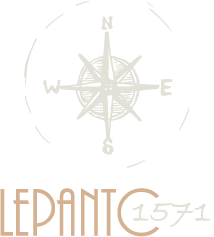Archaeological remains and evidence
At the top of the hill there is the fortified citadel with a fortification wall that was erected following the natural terrain. It is structured in an irregular isodomic building system, with large blocks. Nowadays it is preserved to a height of one or two blocks. There is no evidence for any defensive tower while the fortification is not a particularly strong one. The entrance located at the northern part of the hill permits a smoother access. Moreover, there is no epigraphic evidence regarding the identification of the settlement, yet the latter is based on the existence of the temple of Poseidon. Pausanias describes a myth that is directly connected to the temple of the Hellenikon of Velvina, according to which the sons of Ganyktor, Ktimenos and Antiphon, who killed Hesior, took refuge in the temple of Poseidon at Molykreion. They thus defiled the temple and were subsequently punished by the god.
The temple occupies the northwestern part of the citadel on the axe NW-SE extending 14.37 m x 31.45 m. The temple’s podium is structured as a three-stepped stair while the stairs’ surface at the side of the vertical joints bears a narrow stripe, a rather common element in the Doric temples of the 4th century B.C. The number of columns is 13 x 6. The temple follows the symmetric form at the narrow sides with an opisthodome equal to the pronaos. The temple which belongs to the type of peripteral temples in antis, is dated to the late 5th - early 4th century B.C. The absence of architectural finds, except a few, as well as other factors made the director of the excavation An. Orlandos assume that the temple was never completed because of its large size as well as of the Aetolians’ economic distress.
Heiner Knell on the other hand argues that the temple was not completed due to imperfections in the architectural design of the monument. Moreover, he compares the Temple of Artemis in Calydon to the temple of Molykreion and attributes them to the same architect or the same ‘group’ of builders that created an evolving tradition which reached its climax in the temple of Zeus at Stratos (4th century BC).
At the southern side of the temple there have been located two other buildings more likely of public nature. At the South, outside the citadel there has been preserved a large round tank, technical work which ensured the water supply of the city, traces of which have been identified outside the fortification.
Nowadays systematic excavations within the archaeological site are run by the School of Archaeology of the University of Thessaloniki.
les de Salónica.
